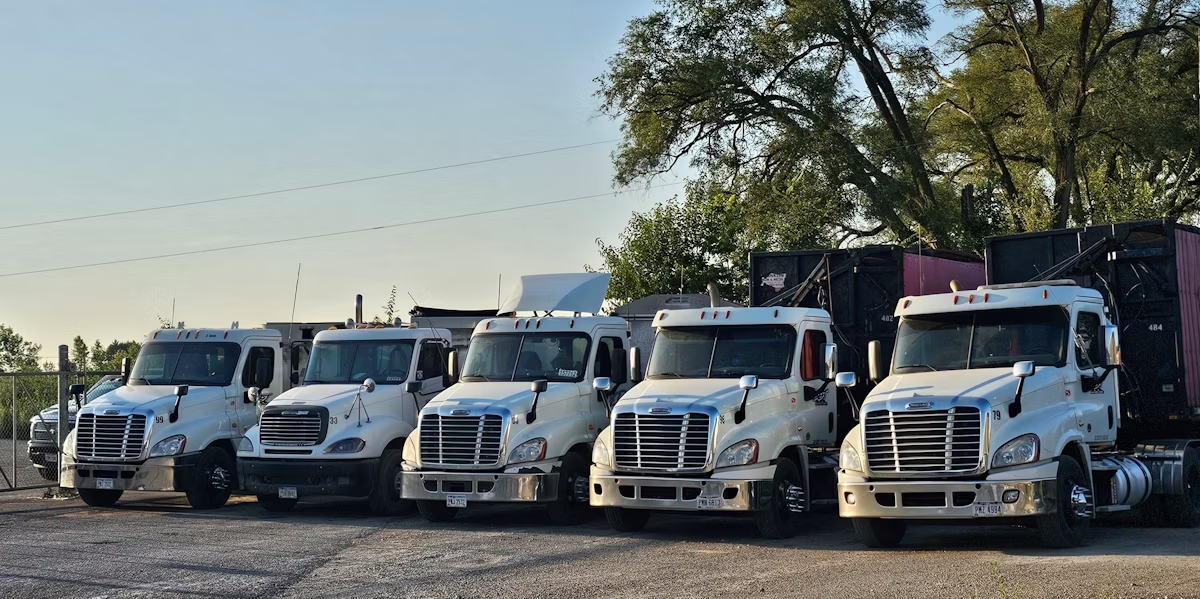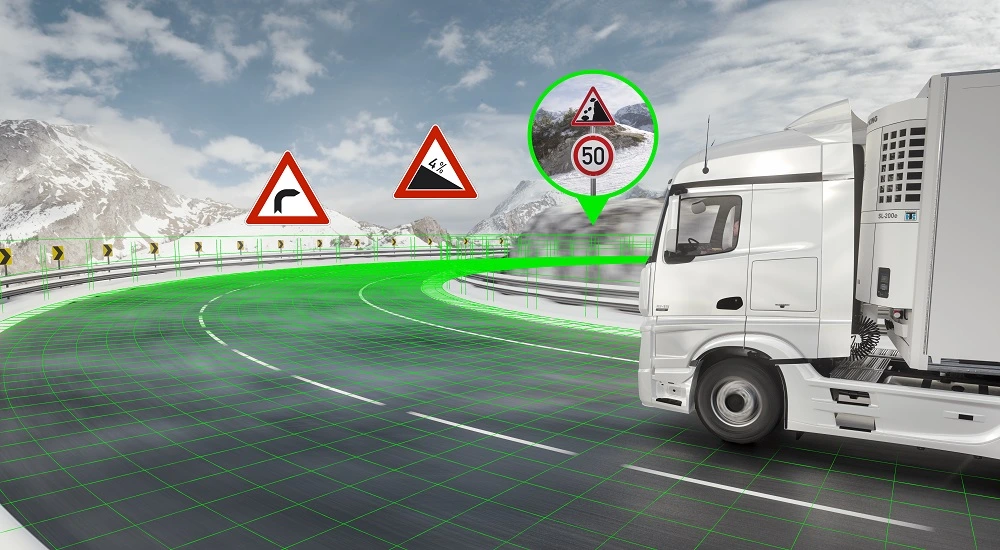Telematics Implementation Challenges (and Proven Fixes for Fleet Managers)
Jul 1, 2025 Resolute Dynamics
Telematics has come a long way. It’s not just GPS dots on a map anymore—it’s real-time alerts, predictive analytics, driver behavior coaching, and safety interventions all bundled into one platform. But here’s the kicker: getting telematics off the ground isn’t always smooth sailing.
Most fleets hit the same potholes on the road to full adoption. Hardware hiccups, data chaos, driver pushback—you name it. And yet, with the right approach, each problem has a clean workaround.
✅ Key Takeaway
Telematics implementation isn’t hard because the tech is faulty—it’s hard because fleets are complex. From old vehicles and patchy networks to overwhelmed drivers and scattered regulations, the real challenges are human and operational.
But with the right tools—modular hardware, AI-driven analytics, strong coaching strategies, and region-aware systems—you can turn those roadblocks into wins. Smart implementation turns data chaos into clarity, cuts costs, and actually gets your team on board.
Why Telematics Is Worth the Trouble
Every fleet I’ve worked with asked the same thing early on: “Is this really going to move the needle?” Short answer—yes. Telematics saves fuel, trims downtime, cuts accidents, and helps dodge compliance headaches. But those wins don’t show up unless the system fits your vehicles, your people, and your operations.
That’s where good implementation matters. It’s not about flashy dashboards—it’s about actionable intelligence flowing from the field back to decision-makers. That intelligence is only as strong as the setup behind it.
Legacy Fleets and Hardware Compatibility

Fleet managers running older trucks often hit a wall when trying to implement telematics. And the culprit isn’t always the vehicle itself—it’s the tangle of outdated data protocols under the hood. Think of it like trying to plug a USB-C cable into a ‘90s landline. You don’t just need an adapter. You need a translator.
Most modern telematics platforms rely on the CAN bus (Controller Area Network) to communicate with a vehicle’s internal systems. That’s the nervous system where ECUs (Electronic Control Units) send and receive critical data. But not all CAN systems are created equal.
Common Protocols and Where It Gets Messy
| Protocol | Typical Use | The Roadblock |
| J1939 | Heavy-duty trucks (e.g., Freightliner, Volvo) | Varies across OEMs despite being “open” |
| ISO 15765 (OBD-II) | Cars, pickups, light commercial vehicles | Limited access in older models |
| Proprietary CAN | OEM-specific (e.g., Mercedes, Scania) | Requires decoding or OEM cooperation |
| K-Line / PWM / VPW | Very old trucks (pre-2004) | Rarely supported by new telematics systems |
Some older vehicles output data in formats that confuse or break modern devices. In other cases, the data is encrypted, undocumented, or locked behind OEM firewalls.
The Fix: How to Retrofit Telematics into Older Vehicles
- Use CAN-Agnostic Gateways
These multi-protocol telematics units automatically detect and translate J1939, ISO 15765, K-Line, and even proprietary variants. They normalize the data so your fleet platform can actually make sense of it—without needing to rewire the truck. - Install OEM-Compatible Decoders
Some advanced gateways come with built-in libraries or partnerships to decode manufacturer-specific messages from Mercedes-Benz, Tata, Ashok Leyland, and others. This lets you bypass OEM restrictions without hacking the system. - Support Over-the-Air (OTA) Firmware Updates
Truck manufacturers update CAN message formats occasionally. Gateways with OTA support let you stay compatible without ever touching the hardware again. - Map Your Fleet’s Protocol Inventory First
Run a one-time audit: list every vehicle by make, model year, and ECU type. Cross-reference this with the communication protocol. That tells you instantly which trucks need bridging hardware and which can plug in directly.
Compatibility Matrix (Quick Reference)
| Vehicle Make | Likely Protocol | Integration Notes |
| Freightliner / Kenworth | J1939 | Easily supported |
| Mercedes-Benz Trucks | Proprietary CAN | May need OEM decoding |
| Tata / Ashok Leyland | J1939 + Custom | Choose device with Indian OEM profiles |
| Ford Ranger / Toyota Hilux | ISO 15765 | Older models have limited real-time data |
| Pre-2004 Vehicles | K-Line / PWM | May require special adapter or exclusion |
Real-World Example
A logistics company in Hyderabad ran a fleet of 60 trucks—half older than 2010. After protocol mapping, they deployed CAN-flexible gateways with Tata-specific profiles. Within three weeks, over 90% of their fleet was sending real-time fuel data, DTC alerts, and driver behavior logs—without swapping a single truck.
Curious how a similar retrofit could work for your fleet? Reach out to Resolute Dynamics to talk with a specialist.
Telematics Data Overload? How AI Filters Signal from Noise
Once telematics systems are installed and running, they don’t hold back. Speed alerts, RPM spikes, throttle pressure, gear shifts, coolant temps, tire pressure anomalies—it’s a firehose of signals pouring in from every corner of the vehicle. And if you’ve got 200 trucks? Multiply that chaos by the second.
The problem isn’t lack of data—it’s overload. Most fleet operators end up with massive logs but very little clarity. That’s where intelligent analytics becomes the game-changer.
Fix:
Don’t try to track everything. Use Edge AI to filter real-time noise and Cloud AI to catch long-term trends. Together, they turn raw data into smart alerts—like coolant issues or driver fatigue—before they become costly failures. It’s not about collecting more info. It’s about getting the right info at the right time.
From Raw Telemetry to Real-Time Insight: How the Flow Works
Let’s break it down:
- Capture
Every vehicle transmits live data via sensors and CAN protocols—things like fuel usage, idle time, brake pressure, steering behavior. - Signal Processing (Edge or Cloud)
That data is either:- Processed locally (Edge AI): Immediate filtering and tagging happens inside the telematics device itself. Faster decisions, lower latency.
- Processed centrally (Cloud AI): Data streams to a centralized platform for aggregation, deeper analysis, and historical trend modeling.
- Pattern Recognition
Algorithms identify behavior clusters—e.g., “vehicle tends to idle over 15 mins daily in Zone B” or “driver X consistently brakes harshly near school zones.” - Predictive Alerts
Instead of reactive reports, you get real-time nudges:- “Coolant trending high—risk of breakdown in 120 km”
- “Rear axle shows vibration spike—possible bearing failure”
- “Route deviation + fatigue marker = potential safety event”
Edge AI vs Cloud AI: What’s the Difference?
| Feature | Edge AI | Cloud AI |
| Speed | Instant (millisecond latency) | Slightly delayed (seconds/minutes) |
| Bandwidth | Minimal (pre-processed locally) | High (raw data transmission) |
| Use Case | Crash detection, throttle alerts | Maintenance forecasting, behavior scoring |
| Example | Driver alert before red zone | Monthly safety heatmap |
Smart fleets usually use a hybrid model—edge for urgent decisions, cloud for deep dives.
Real Example: Predictive Thresholds in Action
A food distribution fleet in Abu Dhabi running 150 vehicles had frequent reefer unit failures, costing thousands in spoiled inventory. After enabling predictive monitoring tied to compressor RPM and internal temp deltas, the system flagged 11 units trending toward failure.
They replaced 9 of them proactively. Downtime dropped 18%, and cold-chain violations dropped to zero that quarter. The AI didn’t just catch errors—it bought time to act..
Overcoming Driver Resistance to Telematics: Building Trust from the Start
Telematics often feels like surveillance to drivers, especially if it’s rolled out without context. To many, it’s not about safety—it’s about being policed. That mindset leads to resistance, tension, and even union blowback in places like North America or the GCC.
Fix:
- Flip the script. Position it as a support tool, not a punishment device.
- Use scorecards to reward, not reprimand.
- Enable anonymous benchmarking so drivers can improve without pressure.
- Offer gamified incentives—fuel bonuses, safety leaderboards, monthly spotlights.
- Be transparent about what data is tracked and why.
- In regions with stricter laws, provide opt-in options and involve driver reps early.
When drivers feel involved and respected, telematics becomes a partner—not a problem.
Maintaining Uptime in Dead Zones: How to Keep Data Flowing Everywhere

You’d be surprised how many places still have spotty cell coverage—tunnels, rural highways, even industrial parks. When a system loses signal, you lose visibility.
Fix: Look for devices with local data buffering. When signal drops, they store events and sync once back online. Dual-SIM or eSIM setups that auto-switch carriers help avoid blackouts.
Lock Down Fleet Data & Stay Ahead of Regulations
Telematics systems handle sensitive information—vehicle locations, driver habits, route histories, fuel usage, and compliance logs. If that data gets exposed or misused, it’s not just a privacy issue—it’s a legal one.
To stay protected:
- Encrypt everything. Use end-to-end standards like AES-256 and TLS 1.3 for data in transit and at rest.
- Control who sees what. Set role-based access so a technician sees maintenance logs, but not driver behavior reports.
- Store data regionally. For fleets operating in the EU (GDPR), India (AIS-140), or the UAE (RTA regulations), local hosting can help meet compliance requirements.
- Log everything. Regulatory audits often require digital proof trails. Make sure your system retains FMCSA logs, access records, and system changes.
When security is baked in—and compliance is built, not bolted on—you’re not just avoiding penalties. You’re building trust with regulators, insurers, and your own drivers.
One Fleet, Many Regions—It Gets Messy Fast
Managing 40 vehicles in one city is one thing. Running 400 across three countries? That’s another beast entirely. Different road rules, speed limit laws, and map standards cause chaos.
Fix: Use an API-first platform that adapts fast. Geofencing tied to local rules. ISA systems that read road sign data and adjust speed behavior automatically. A setup that “thinks local” even if it’s managed centrally.
Proving Fleet Telematics ROI: What Decision-Makers Actually Care About
CFOs and fleet directors don’t buy into tech—they buy into outcomes. You can show them dashboards all day, but if there’s no dollar sign attached, it won’t survive the budget meeting.
Here’s how to turn raw telematics data into ROI that speaks their language:
1. Start With Fast Wins
Begin tracking the metrics that move the needle early:
- Fuel per kilometer
- Speeding violations per vehicle per month
- Idling hours vs. drive time
Just tightening up on idle and harsh acceleration can cut fuel waste by 5–10% across a large fleet. That’s tangible.
2. Track Mid-Term Cost Drivers
Over 3–6 months, log:
- Insurance claims and premium changes
- Unplanned repair frequency
- Vehicle downtime in hours/month
- Total Cost of Ownership (TCO) movement
This is where the financial story builds. If your telematics platform helped reduce incidents by 25%, that could mean $1,500–$2,000 saved per vehicle annually, depending on your claim history.
3. Present ROI in CFO Language
Skip the charts. Show this instead:
“Speeding violations down 38% → $4,600 saved in fuel + $11,000 in claim reduction across Q2.”
That’s the kind of language that green-lights expansions and full fleet rollouts.
Real Snapshot:
A regional delivery fleet with 120 vehicles in Sharjah used telematics to monitor harsh braking, excessive idling, and speeding. Within four months:
- Insurance claims dropped 27%
- Fuel consumption per km fell 8%
- Overall operating cost per vehicle dropped by $130–$140 USD per month
That’s the kind of ROI that doesn’t just convince leadership—it funds the next phase.
Fleet Telematics KPIs: How to Measure Success

You can’t manage what you don’t measure. Here’s how to track whether your telematics rollout is actually paying off:
First 30 Days
- Devices installed and activated
- Real-time data flowing into your dashboard
- Users (managers + drivers) actively engaging with the system
Day 31 to 90
- Noticeable drop in harsh driving, speeding, and idle time
- Faster detection and response to maintenance issues
- Increased driver coaching participation
6 to 12 Months
- Fewer road incidents and safety violations
- Better fuel economy across the fleet
- Less downtime from unexpected breakdowns
- Reduction in insurance premiums or claims
- Measurable savings in operating costs (TCO down)
If those metrics aren’t trending up, it’s not the tech—it’s the setup. Time for a tune-up.
Final Word
Telematics isn’t just about devices—it’s about decisions made smarter, risks caught earlier, and teams that drive with purpose. The rollout may hit bumps, but it’s never a dead end. Choose hardware that speaks your fleet’s language. Let AI cut through the clutter. Bring drivers along, not against. Lock down data and lift up performance.
When every moving part works together, you don’t just manage a fleet—you run it with confidence, insight, and momentum.